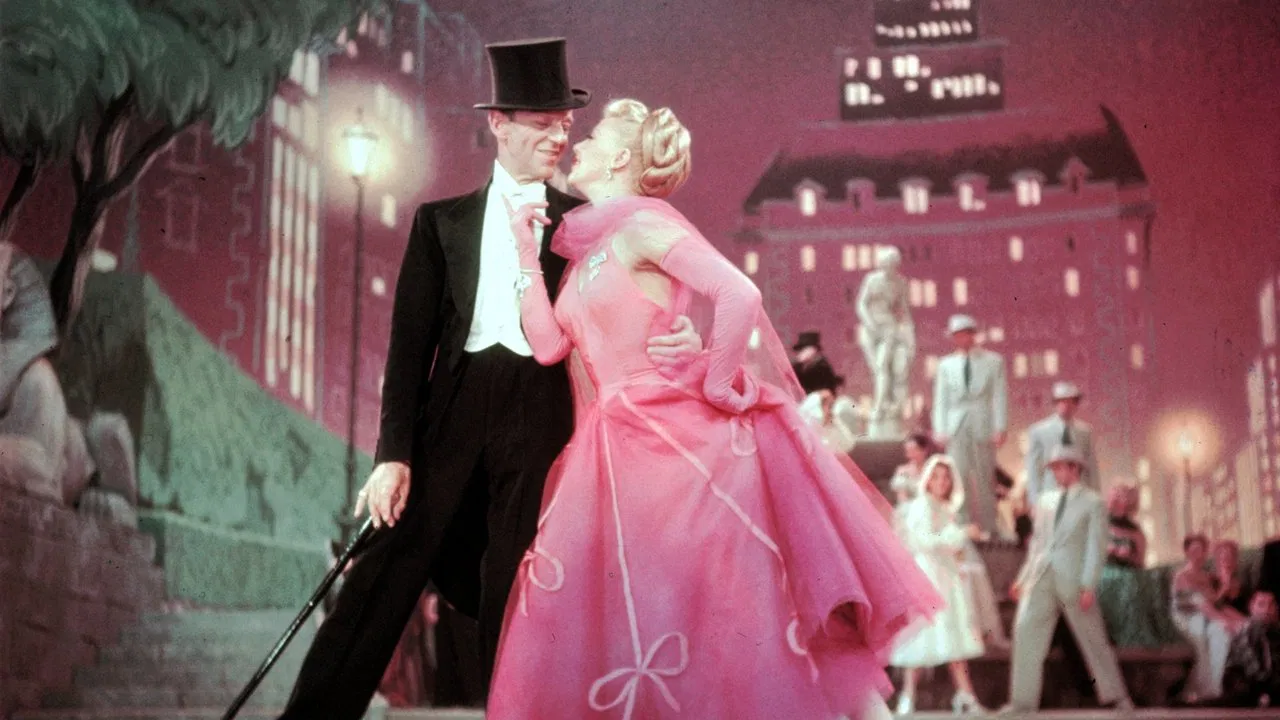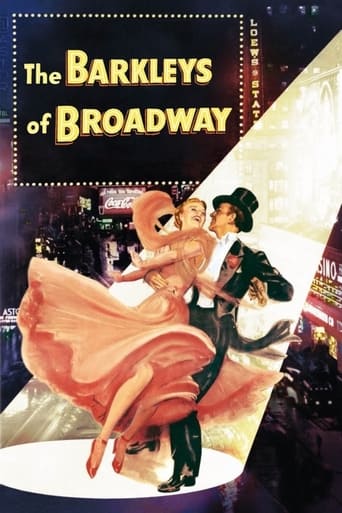

There is nothing wrong with this film, and yet it doesn't really get going. The intrigue is too stupid (a couple quarrelling all the time without coming to a decision whether to split or not), the dialogue is insipid, the tempo is too slow, the film is too long about nothing, and you keep longing for the musical dancing scenes, which of course save the film, including Oscar Levant, who is the only one adding some ingenuity to this general awkwardness. Not until Fred and Ginger at last get going in proper classical style and elegance in "They Can't Take That Away From Me" you feel at home with their standard again. This is clearly not their best film, maybe the worst, but it's still worth watching for their and Oscar Levant's sake. Sorry, I can't give it more than 8.
... View More1. Ginger danced forward. Fred danced backward. When I was taught ballroom dancing, I always danced forward. The man always danced backward. 2. Ginger/Dinah got in a lot of zingers during the 'Heeland Fling' debacle. She had tons of boyfriends. Fred/Josh was an ugly jerk, smug and stupid, who didn't even offer Ginger one germ-laden ladle of water. Fred was so ignorant, pretending he was too good for Ginger. Fred's pipe was so obnoxious. Who would want to kiss him?3. Fred made put-downs of Ginger all throughout the movie. Ginger accepted some of this, as in when she was talking about her 'punishment'. This was disgusting on both their parts. 4. Fred smoked cigarettes throughout the entire movie. Ugh. He appeared to be a mean, puny little SOB. 5. For song and dance, I am giving this movie an 8. For the negative parts, those areas would have to be a 5 on their own. For nostalgic reasons, I watch this movie. For it being Fred and Ginger's final movie together, I still watch it, and because it was their only color joint outing. For the era of male sexist supposed superiority, I have to consider the times and let it go at that.Jacques Barredout was respectful of Ginger up to a point, but he was pretty mouthy to her during his rehearsals with her. He turned out to be somewhat of a sexist pig himself.Billie Burke didn't have a big enough part. I somehow liked her Mrs. Livingston Belney's twittery personality, however. Oscar Levant was an excellent pianist, but his chain cigarette smoking and multiple womanizing didn't help, though.
... View MoreThe Barkleys of Broadway is directed by Charles Walters and written by Betty Comden and Adolph Green. It stars Fred Astaire, Ginger Rogers, Oscar Levant, Billie Burke, Gale Robbins and Jacques François. Music is by Lennie Hayton and cinematography by Harry Stradling Sr.Fred and Ginger play the Barkleys, a successful husband and wife musical comedy team that seems to thrive on feuding. However, one day it goes too far and a break up appears certain when the wife entertains an offer from Jacques François to become a serious actress.Firsts and lasts here as it was the first film Astaire and Rogers did for MGM, their first in colour, and their last they would make together after reconvening after 10 years - Rogers stepping in when Judy Garland fell to her troubled wayside. The screenplay is pretty thin, serving only as a thin piece of meat to the dance and musical numbers sandwich, but with stand-outs like the wonderful "Shoes with Wings On" and the joyous uplift of 'They Can't Take That Away from Me' to spend time with, it's a film to brighten the darkest of days. 7/10
... View MoreFred Astaire and Ginger Rogers ended their film association with this wonderful 1949 film.Their singing and dancing was marvelous as usual. The opening scene, while the credits rolled, was memorable. The Irish number was fantastic and no one can forget They Can't Take That Away from Me.Oscar Levant is in fine form as their friend and Billie Burke's voice is just what is needed as the upper society matron of the Broadway scene.A successful Broadway couple whose constant bickering eventually threatens their marriage, both Rogers and Astaire were in top form. Ginger aspires to go beyond musical comedy to the world of serious acting when she is cast to play a young Sarah Bernhardt.A lot of this film mirrored real-life when Ginger left musicals to become a serious actress only to cop the Oscar for 1940's "Kitty Foyle."
... View More